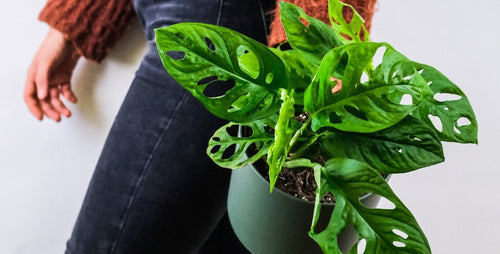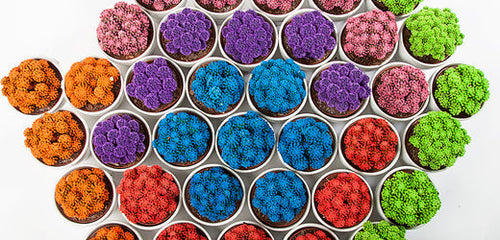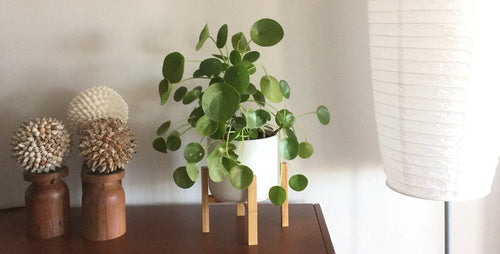By Justin Hancock
Crotons are some of the most versatile plants we grow here at Costa Farms. You can enjoy them indoors or out, in containers or planted in the ground. And no matter where you grow them, their bright colors are a welcome way to add interest to your favorite space.
Crotons as Houseplants
You can enjoy crotons as cheery houseplants no matter what climate you live in. They’re a topnotch choice for bringing color and texture to your home or office, especially in dreary winter months. As indoor plants, crotons appreciate high light. They also prefer average to warm temperatures, and average to above-average relative humidity. The most common issue we see with crotons as houseplants is when they don’t get enough light and shed their foliage. Water them when the top inch or so of the potting mix dries to the touch.

Crotons as Annuals
Crotons offer flamboyant, textural foliage, making them valuable in container gardens and landscape beds and borders. Hailing from the tropics, count on croton plants to hold up to hot, humid weather. They are eye-catching and attractive companions for coleus, canna, celosia, lantana, angelonia, marigolds, and other seasonal favorites.
Many croton varieties, including popular ‘Petra’ are variegated with shades of red, orange, and yellow. This makes them wonderful for use in fall planters alongside mums, asters, pansies, and black-eyed Susan.
Cultivate crotons outdoors as annuals in sun or shade. While you typically see more color and faster growth if they’re grown in the sun, their shade tolerance makes them a useful counterpoint to caladiums, hostas, and impatiens.
Get tips for saving tropical crotons before winter.
Crotons as Shrubs
In a frost-free climate (such as South Florida or Central Florida), you can also employ crotons as evergreen shrubs in your landscape. Popular as hedges and foundation plantings, the plants can also punctuate perennial beds and borders in the tropics and subtropics. Different varieties grow different sizes, but you can find types that grow from 4 to 10 feet tall and wide. Most are relatively slow growers as landscape shrubs and take well to pruning.
Once established, crotons are relatively drought tolerant, so they are easy to care for. There are varieties that thrive in full sun and others that prefer part shade, making it easy to use them in your landscape.

Croton Varieties
‘Petra’ croton (Codiaeum variegatum ‘Petra’) is the most common variety. It shows off large, oval green leaves veined and shaded with bright yellow, rich orange, and deep red. Indoors, over time and with good care, this variety can grow 5 feet tall and wide or so. Outdoors as a shrub, ‘Petra’ can grow about 8 feet tall and 6 feet wide.
Mamey croton (Codiaeum variegatum ‘Mammy’) is also popular. It features long, narrow leaves that often curl or twist as it grows, making it delightfully textural. Its dark green foliage is variegated in red, yellow, orange, and purple -- sometimes so much so the new growth hardly shows any green. It can grow 6 feet tall and wide.
‘Oakleaf’ croton (Codiaeum variegatum ‘Oakleaf’) earned its common name because its oval leaves are somewhat lobed, like an oak tree’s. The dark green leaves have a similar variegation pattern to ‘Petra’, showing off red, orange, and yellow veins. It can reach 8 feet tall and wide when grown outdoors.
‘Sunny Star’ croton (Codiaeum variegatum ‘Sunny Star’) is a smaller selection. It features lance-shaped green leaves speckled and splashed with bright golden yellow. Outdoors as a landscape shrub, it can grow 5 feet tall and wide.
‘Magnificent’ croton (Codiaeum variegatum ‘Magnificent’) features oval green leaves splashed with shades of soft yellow, pink, peach, and orange. Outdoors, this variety prefers some afternoon shade, especially in hot-summer areas. Indoors it does best in high light, like all crotons. It can grow 6 feet tall and wide.

Shopping for Crotons
Because most croton varieties have similar care needs, start by selecting the type that appeals most to you. When choosing an individual plant from your local garden center, look for one that has leaves from the top of the plant all the way down. While they do lose their bottom leaves as they age, plants that look like they have bare legs may have been stressed.
To maintain a full, bushy look from your croton plant, pick one that has good branching, where the main stems have lots of side branches, rather than a plant that puts most of its energy into growing straight up with few side shoots. Over time, plants that don’t branch well can look tall and spindly, especially when grown indoors without enough light.
If you’re shopping for a smaller plant, you can get a good sense of how healthy it is by gently removing it from the pot. The roots should be firm and light in color. If the roots look brown and mushy, the croton has probably been overwatered. Also, watch that the croton plant is not excessively rootbound, with masses of roots circling the inside of the pot. Rootbound plants are more susceptible to stress.

















